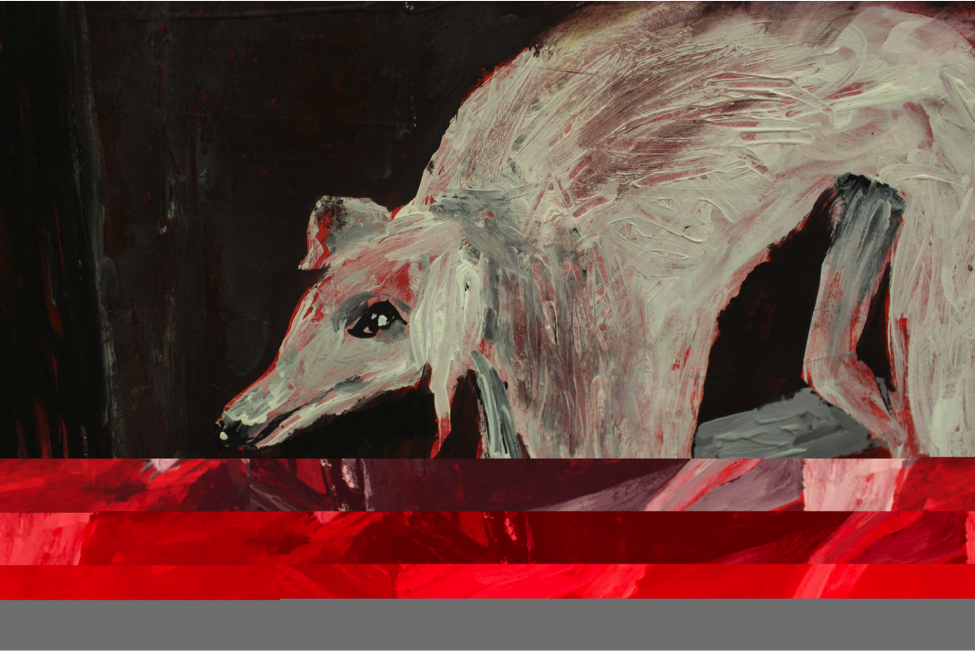Skhandal: Warwick students explore Daemons in art exhibition
“Just do it.” The words of English Literature and Creative Writing student Peter Page, when asked what one piece of advice he would give to fellow aspiring creatives.
Peter, along with four other second-year students – Willow Orton, Lis Skinner, Sara Murray and Ang Kia Yee – combined their efforts to create a month-long art exhibition, Skhandal, at the University of Warwick. These students went above and beyond the regular academic sphere of university. They took the initiative to develop themselves further, with the culmination of their hard labour being the creation of the ‘Daemons Exhibition’, which was showcased at Milburn House in February and March.
The exhibition was inspired by the Warwick Writing Programme’s teachings of Daemons – strange transcendental cryptids that occupy the perspective of the artist while they create. The exhibitionists aim to use the concept of Daemons to explore the fluidity of identity by going beyond the norm. Using the technique of ‘negative capability’ in the creation of their works, they have “the ability to see beyond a ‘human’ vantage point, and instead through the eyes of an external body”.
Daemons are strange transcendental cryptids that occupy the perspective of the artist while they create
You may be feeling overwhelmed by these unfamiliar terms about mystical beings, but the idea is very simple: the artists involved are painting portraits of their spirits rather than their bodies.
After we discussed what the exhibition was about, I delved deeper into the mindset of a creative like Peter. Asking him whether creativity can be nurtured, he said that it could not, adding that it is not a characteristic that is “exclusive to a select few”; it is an “inherent feature” we all have. In his eyes, we all have the potential to be creative. He also points out that the wonderful thing about ‘creativity’ is its subjective nature. A lack of a coherent way of observing or measuring one’s ‘creativity’ means anyone can be a creative, which, Peter believes, is what makes art so special.
With that in mind, the Daemons exhibition aimed to attract a diverse range of visitors, as it would be “shocking to find someone who doesn’t identify with at least one of the exhibits”. One of Peter’s pieces was so awe-inspiring and gripping, that it was sold for nearly £1,000.
The artists involved are painting portraits of their spirits rather than their bodies
As the interview continued, I asked Peter why he thinks art is so important – especially since many people, myself included, do not always appreciate the value it supposedly brings. He says that art is an expression, it is a “human-created language of emotions”. Whilst we may not regularly think it, the “human world is made using art – society requires art to function.” From the most expensive of tasks, such as developing a company’s branding, to small-scale home decorating, art is omnipotent. Peter professes that art goes beyond just a picture: it is almost like a “being” in itself. Art is beyond the realm of human tangibility. It is everywhere, whether we appreciate it or not.
Creating the exhibition required an immeasurable amount of dedication and passion. Asked what his motivation was, Peter said he believes the process had been “immensely rewarding in exploring the many opportunities for creative careers.” He enjoyed every step of the process: meeting other artists along the way, having to be entrepreneurial in the funding for the exhibition, saving up money from jobs and selling unwanted items. Peter views the exhibition as an investment “in self-development”, rather than a financial one. He speaks of the journey itself, saying he has gained so much from it, and met some great people along the way, making this extra-curricular venture “far beyond worthwhile”. He hopes it will “allow me to enter a space where I can spend all of my time doing one of two things – creating, and working out how to sustain myself in order to create more in the future”.
If successful, which it so far has proven to be, Peter plans on embarking on other creative projects, such as hosting an experimental performance poetry event, and doing “something drastic” to the dilapidated Humanities building before it is demolished. This could be the start of an incredible journey for Peter, or as he put it: the “beginning of the rest of my life”.
To keep up-to-date with future events, follow the creative group’s Instagram account: @Skhandalus
If you’d like to get involved with any future projects, then feel free to email Peter on: papage97@gmail.com

Comments